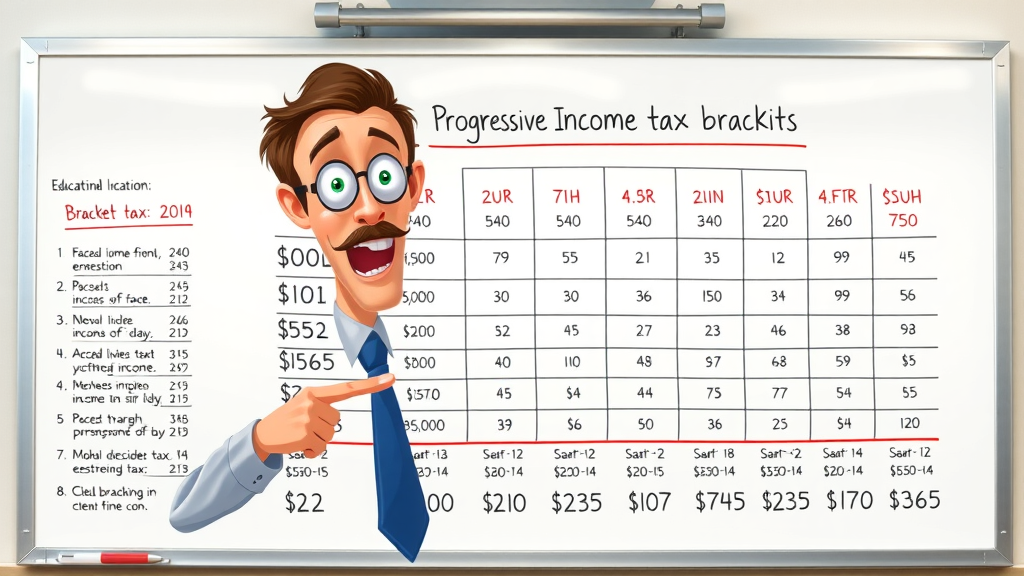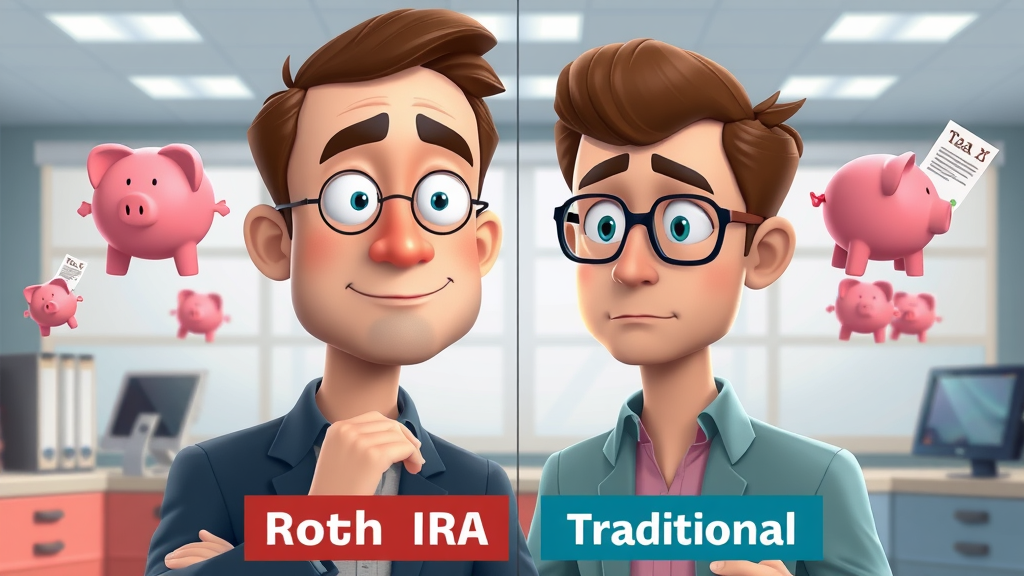
Ever wonder if you’re unnecessarily giving away tens of thousands to taxes each year? For high earners, the tax system feels both relentless and confusing. Are you making the most of perfectly legal strategies—without venturing into risky tax shelters or questionable loopholes? If you’ve crossed the $500k income mark, this article reveals the real, sustainable approaches that can dramatically reduce your federal tax bill and fortify your financial future. Read on to see how smart tax planning can empower your next move and ensure you keep more of what you earn.
Are You Paying Too Much? Discover Safe Methods for How to Reduce Taxes on $500k+ Income
Making over $500,000 a year propels you into the highest federal tax rate brackets, often triggering anxiety about what you actually get to keep after federal and state taxes take their share. The truth? Many high-income professionals don’t have to settle for a sky-high tax bill. There are proven, practical techniques to manage your tax liability safely and legally—no risky offshore maneuvers, just smart, expert-backed financial planning. By understanding the rules and leveraging them to your advantage, you can reduce your taxable income, optimize deductions, and lower your effective tax rate with confidence.
Let’s challenge the idea that federal tax is a fixed, unmovable burden at your income level. Whether through maxing out a retirement plan , making use of HSAs, or thoughtful charitable giving, these strategies can help anyone earning $500k+ take meaningful action to ease their tax rate and stay compliant with current tax law. Partnering with a certified financial advisor transforms complex tax planning from an annual headache to a consistent tool for protecting your prosperity and achieving long-term goals.
- You'll gain insight on:
- Practical income tax strategies
- Expert tax planning tips for high earners
- Ways to manage your federal tax responsibly
- How to leverage your retirement plan for tax efficiency
- Common myths about the tax rate for top incomes
Understanding the Tax Landscape: How to Reduce Taxes on $500k+ Income Legally
The Progressive Income Tax System Explained

To reduce taxes on $500k+ income, you need to understand how the U.S. federal tax system works . The nation uses a progressive tax system, which means tax rates increase as your income rises. If you’re earning over $500,000, every extra dollar gets taxed at the highest rates, but only above the threshold for each tax bracket. Your first dollars are taxed at lower rates, with only the income above certain levels taxed at the top federal tax rates. This ensures that strategies to shift some of your taxable income into lower brackets—such as through retirement plan contributions or charitable giving—can produce significant savings.
Many high-income earners mistakenly believe that crossing into a higher bracket means all their income is taxed at that top rate, which isn’t true. The progressive system means only income above set limits faces higher tax brackets. Understanding this distinction is key to building effective tax planning strategies that legally lower your overall tax bill—especially important when your income places you in the 32%, 35%, or 37% brackets.
Federal Tax Considerations for High Incomes
With a $500,000+ income, you are subject to some of the highest federal tax rates, alongside additional taxes like the Net Investment Income Tax and phase-outs of itemized deductions. It’s essential to know how these combined taxes impact your effective tax rate. High earners may also face alternative minimum tax (AMT) and restrictions on state and local tax deductions, further raising their federal tax burden if not managed proactively. Staying compliant with current tax law while minimizing your federal taxes requires attention to every area of your financial plan, from managing investment income to maximizing credits and deductions wherever available.
To address these challenges, consider diversifying your income sources. While salary is fully taxed, qualified dividends and long-term capital gains are generally taxed at a lower federal rate. Smart capital gains management and tax-efficient investment strategies enable high earners to reduce their overall tax liability without taking on undue risk. Consult with an experienced financial advisor—experts in tax planning understand how high income, capital gains, and federal tax rates interact to determine your true tax bill.
How Your Tax Rate Changes Above $500k
Once your income surpasses the $500k threshold, your marginal tax rate soars to the 35% and 37% brackets. For 2024, here’s what those numbers look like:
"Tax planning is not just about minimizing your taxes today, but also about creating a sustainable, long-term financial future." – Tax Planning Expert
| Filing Status | Taxable Income | Tax Rate |
|---|---|---|
| Single | $539,901+ | 37% |
| Married Filing Jointly | $647,851+ | 37% |
| Head of Household | $539,901+ | 37% |

If you strategically use tax deductions, retirement plans, and income deferral, you can often reduce your effective tax rate to something markedly lower than the top bracket. Advanced tax planning is all about playing by the rules while keeping more of your earnings—without gambling with your financial future.
Tax Planning Essentials: How to Reduce Taxes on $500k+ Income Without Taking Risks
Top Tax Planning Strategies for $500k+ Earners
- Maximize retirement plan contributions
- Utilize Health Savings Accounts (HSAs)
- Explore Charitable Donations and Donor-Advised Funds
- Defer income with Nonqualified Plans

To reduce taxes on a $500k+ income, start with the basics: max out your 401(k), 403(b), or IRA contributions. Not only do these accounts offer immediate tax advantages , but they also support long-term financial security. Health Savings Accounts (HSAs) are another underutilized gem—contributions are pre-tax, growth is tax-free, and qualified withdrawals for medical expenses aren’t taxed at all. Charitable donations remain one of the most impactful forms of tax reduction. Consider using Donor-Advised Funds to bundle gifts and maximize deductions in high-income years. Finally, income deferral through nonqualified retirement or bonus plans can push income into lower-tax years, smoothing out your lifetime tax liability responsibly.
Working with a Financial Advisor on Income Tax Efficiency
It’s easy to feel overwhelmed by the interplay between tax law , investment decisions, and personal goals. This is where a certified financial advisor who specializes in high-income tax planning adds real value. Advisors don’t just recommend broad strategies—they tailor solutions to your unique financial situation, considering your income streams, retirement plan options, state tax environment, and more. A seasoned advisor also ensures you don’t miss vital tax deductions or credits, implements tax-loss harvesting for capital gains, and keeps your investment allocation tax efficient.
Financial advisors are also well-versed in the subtleties of tax implications for things like real estate income, restricted stock units (RSUs), or pass-through business income. Don’t underestimate the compound power of professional guidance: a small change in tax rate now grows into six or seven figures of additional wealth over a few decades, all thanks to expert planning and legal tax savings.
Avoiding Common High-Income Tax Planning Mistakes

Common pitfalls among high earners include neglecting to update their tax planning as their income rises, assuming that deductions disappear entirely above certain thresholds, and skipping review meetings with their advisor when tax law changes. Failing to diversify income types, overlooking estate tax implications, and not understanding when AMT or phase-outs of specific credits occur can cost high-income households thousands each year. Sticking to time-tested strategies—like maximizing retirement account contributions and methodical charitable gifting—avoids trouble.
Remember, even seasoned professionals can fall prey to rushing through their tax return or assuming last year’s tactics will work again. Proactivity and ongoing financial planning are key: address your specific situation, adjust for life changes (like a business windfall or the sale of real estate), and stay on top of evolving state taxes and federal rules.
Leveraging Retirement Plan Options to Lower Your Tax Rate at $500k+ Income
Max Out 401(k), 403(b), and IRA Contributions
Maximizing contributions to qualified retirement accounts is one of the most effective ways to lower your taxable income and protect your wealth from the highest tax rates. In 2024, you can contribute up to $23,000 ($30,500 if age 50+) to a 401(k) or 403(b), with these investments growing tax-deferred until retirement. Traditional IRAs let you set aside $7,000 ($8,000 if 50+), providing an immediate deduction if you meet certain criteria. For higher earners, a backdoor Roth IRA strategy might provide tax-free growth without income limits—a valuable move if implemented correctly.
By making these strategic contributions, your taxable income may be dropped below critical thresholds, reducing exposure to higher federal tax brackets and potentially lessening state tax impact as well. Deferred investments also help you manage income in retirement, controlling what you withdraw and when, which can further ease long-term tax bills.
Roth vs. Traditional Accounts: Which Reduces Taxes for High Earners?

The Roth vs. Traditional debate is nuanced for high earners. A Traditional IRA or 401(k) gives up-front deductions, reducing your current tax bill. A Roth IRA , though funded with after-tax dollars, delivers tax-free withdrawals later—potentially powerful if tax rates rise in the future. While income limits block direct Roth contributions for most $500k+ earners, “backdoor” Roth strategies (converting non-deductible IRA dollars into a Roth) can offer tax diversification in retirement. These moves should be handled with care and customized to your specific income level and long-term needs. A skilled financial advisor will clarify which options fit your overall financial plan and ensure you avoid triggering unnecessary tax law complications.
For many, the best solution is to diversify across both account types. By having tax-deferred and tax-free sources to draw from in retirement, you gain flexibility to adapt to changing tax rates, manage RMDs, and optimize total tax paid over your lifetime.
Federal Tax Deductions and Credits: How to Reduce Taxes on $500k+ Income
Itemized Deductions Still Available for High Earners

Even with limits on certain deductions, high earners can still make use of itemized deductions to lower their income tax. Review all potential deductions—from mortgage interest and investment interest to qualified medical expenses and property taxes (within the $10,000 SALT cap). High earners should also be strategic about bunching deductions, especially charitable donations, into single years to clear the standard deduction threshold. Keeping receipts and proper documentation is essential in case your tax return attracts IRS scrutiny.
Charitable Gifting and Tax Rate Reduction

Charitable giving remains a high-impact way to cut your tax bill, particularly for $500k+ earners. You can deduct up to 60% of your adjusted gross income for cash gifts to qualifying public charities, and gifting appreciated securities further avoids capital gains tax. Advanced tools—such as Donor-Advised Funds or charitable trusts—let you plan gifts over several years, maximizing both your giving potential and your tax reduction in the years you need it most. Coupling giving with your overall tax planning approach delivers lasting benefits for both your community and your net worth.
Beyond Deductions: The Value of Tax Credits for $500k+ Households
While most credits (like the Child Tax Credit) phase out for high-income households, some remain valuable or are tied to specific activities. Explore credits for energy-efficient home improvements, electric vehicles, or adoption. As tax credits offset your tax bill dollar-for-dollar, every possible one you claim further reduces your effective tax rate. Check with your financial advisor to ensure you are leveraging all credit opportunities available to your income level.
- Consider state and local tax (SALT) deduction limits
- Review mortgage interest strategies
- Employ advanced charitable giving methods
Smart Income Tax Approaches Beyond Legal Loopholes
Tax-Efficient Investment Strategies
Reducing taxes on $500k+ income isn’t just about deductions; it’s about structuring your investments for optimal tax efficiency. Consider municipal bonds (for tax-free income), low-turnover index funds, and tax-managed accounts to minimize taxable distributions. Harvest tax losses to offset gains, and locate income-generating assets within retirement accounts while using taxable accounts for long-term growth. This asset location discipline can shrink your annual tax bill and grow your after-tax net worth much faster over time.
Capital Gains Management for Federal Tax Minimization

For those in high tax brackets, capital gains strategy is vital. Long-term gains are taxed at lower federal rates than regular income, but realizing too many gains in a single year can push you into the 20% gains bracket and trigger the 3.8% Net Investment Income Tax. Balance your gains across years, use loss harvesting, and avoid rapid selling after major asset appreciation if possible. If you have significant real estate or business assets, coordinate major sales with your advisor and CPA to minimize the shock to your own tax rate.
People Also Ask: How to Reduce Taxes on $500k+ Income
How to save taxes on 500k income?
Saving taxes on a $500k income is achievable through maximizing retirement plan contributions, leveraging Health Savings Accounts, and making strategic charitable donations. Tax planning with a certified financial advisor ensures full utilization of legal deductions and credits, reducing your effective federal tax rate.
How can I lower my taxes on my income?
Lowering your taxes involves structured tax planning, deferring income when possible, investing tax-efficiently, and considering potential benefits from retirement plans. Consult a tax expert for personalized strategies tailored to your financial profile.
What lowers the amount of taxable income?
Taxable income can be lowered through contributions to qualified retirement accounts, Health Savings Accounts, and utilizing available deductions like mortgage interest and charitable gifts. Effective tax planning incorporates these tactics without exposing you to unnecessary risk.
How to avoid 32% tax bracket?
Avoiding the 32% tax bracket can be managed by timing your income, contributing to retirement plans, and deferring bonuses or other earnings when possible. Tax planning should always focus on legal and sustainable strategies.

Expert Insights: Why Tax Planning Is Vital for $500k+ Earners
"Income tax is the price of prosperity, but smart planning ensures you keep more of what you earn."

Proactive tax planning is essential for anyone with a $500k+ income. The higher your earnings, the more opportunities exist for genuine, risk-free savings—if you know how to leverage deductions, optimize income timing, and diversify account types. Those who prioritize advanced planning year-round, rather than just come tax season, consistently secure the lowest possible tax bill over time. In the end, maintaining and growing your wealth is as much about smart tax decisions as investment returns.
Frequently Asked Questions
- What are the best retirement plans for reducing taxes at $500k+ income? 401(k), 403(b), and backdoor Roth IRA strategies top the list, with HSAs offering additional savings.
- Is it better to itemize or take the standard deduction? High earners often benefit from itemizing, especially when mortgage interest and charitable gifts add up, but calculation with your financial advisor is key.
- How do Roth conversions work for high-income earners? Backdoor Roth strategies allow after-tax IRA contributions to be converted into a Roth IRA, creating tax-free growth even at high incomes.
- Can a financial advisor really help lower my federal tax? Absolutely—experienced advisors implement custom plans using every available legal strategy, often saving major dollars over time.
Key Steps Every High Earner Should Take Now to Manage Their Income Tax and Tax Rate
- Review your tax planning strategies annually
- Maximize retirement plan and HSA contributions
- Work with a professional financial advisor
- Revisit your charitable giving portfolio
- Stay updated on changes to federal tax legislation
Start Your Journey: Expert Tax Planning for $500k+ Income Today
"The earlier you start tax planning, the greater your potential for savings—especially when your income exceeds $500k."
Don't let another year go by without a well-designed tax plan. Consult a financial advisor today and take active steps to secure more of your hard-earned wealth.
Watch top-rated experts share practical, proven strategies for how to reduce taxes on $500k+ income—free of risky loopholes and packed with real-life examples you can use.
Discover the most common high tax bracket errors and see how successful professionals keep their tax bill minimized without unnecessary risks.
Taking Control: Use Professional Tax Planning to Lower Your Federal Tax Safely and Sustainably
Actionable Step: Schedule a tax planning review with a certified financial advisor, stay engaged in your financial planning all year, and revisit strategies as your income, assets, and goals evolve.
For high-income earners seeking to reduce their tax liabilities without resorting to risky strategies, several proven methods can be employed:
-
Maximize Retirement Contributions : Contributing to tax-advantaged retirement accounts such as 401(k)s and IRAs can significantly lower taxable income. For 2024, the contribution limits are $23,000 for 401(k) plans, with an additional $7,500 catch-up contribution for those aged 50 and over. ( njcpausa.com )
-
Utilize Health Savings Accounts (HSAs) : HSAs offer a triple tax advantage: contributions are made with pre-tax dollars, the funds grow tax-free, and withdrawals for qualified medical expenses are also tax-free. For 2024, individuals can contribute up to $4,150, and families up to $8,300, with an additional $1,000 catch-up contribution for those aged 55 and over. ( taxcalculatorusa.com )
-
Leverage Charitable Contributions : Donating to qualified charities can provide substantial tax deductions. Establishing a Donor-Advised Fund (DAF) allows for an immediate tax deduction while distributing funds to charities over time. This strategy is particularly beneficial in high-income years to offset significant tax liabilities. ( tdwealth.net )
-
Invest in Tax-Efficient Vehicles : Investing in municipal bonds can provide tax-free interest income at the federal level, and potentially at the state level if the bonds are from your home state. This strategy can be particularly advantageous for high-income earners seeking to minimize taxable investment income. ( njcpausa.com )
-
Consider Roth IRA Conversions : Converting a traditional IRA to a Roth IRA involves paying taxes on the converted amount now, but allows for tax-free withdrawals in retirement. This strategy can be beneficial if you anticipate being in a higher tax bracket in the future. ( kiplinger.com )
Implementing these strategies can help high-income earners effectively reduce their tax liabilities while remaining compliant with tax laws.
 Add Row
Add Row  Add
Add 




Write A Comment